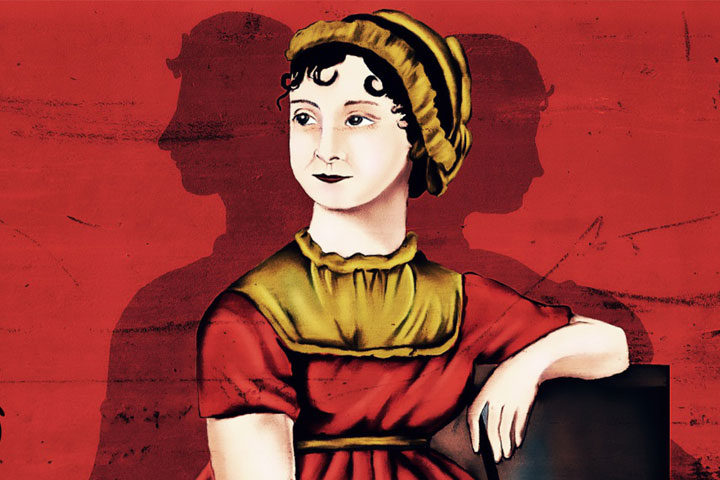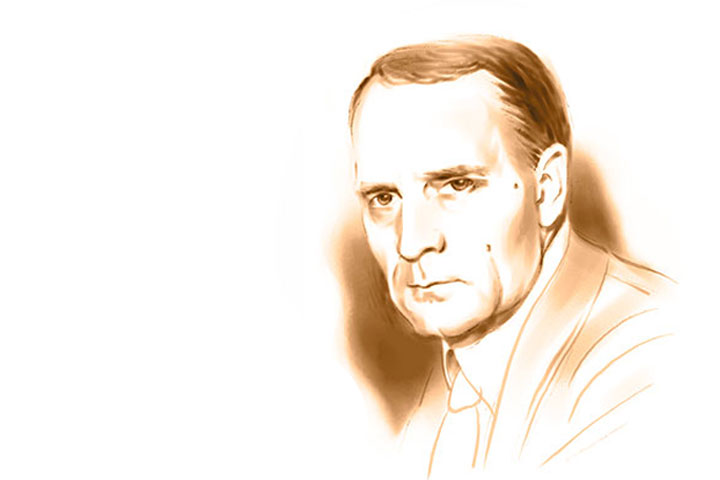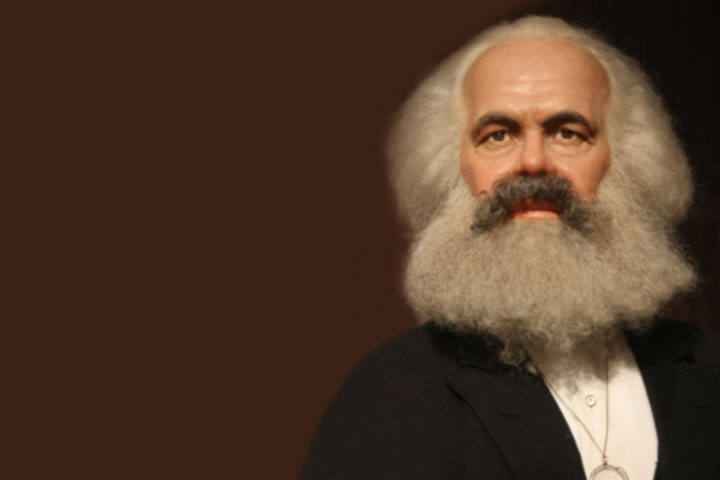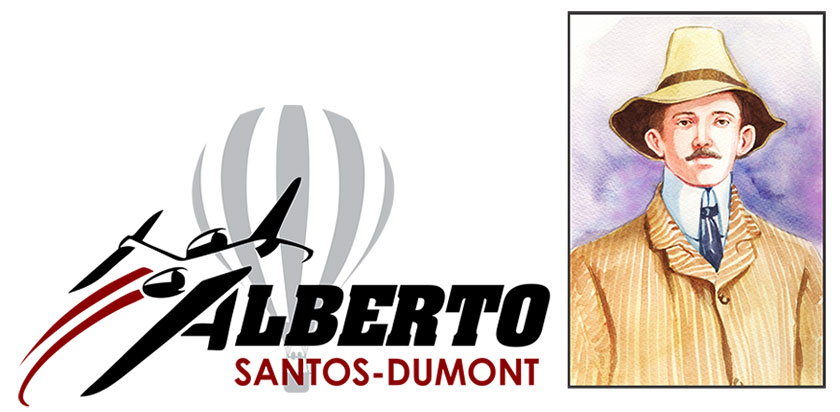
More than 100 years ago, in the remote state of Minas Gerais in Brazil, a young boy would ceaselessly gaze up at the magnificent blue sky, and would dream of flying just like the birds, so as to have an aerial view of the earth below. As he grew up, his dreams turned into his passion, and then transformed into the sole objective of his life….to fly with the wind, and view the earth beneath.
He struggled, slogged and strove hard to achieve the impossible. He finally triumphed when he created and operated the first flying machine, an airship. But his fame and success was soon eclipsed by the claims of the Wright Brothers, whom history till date gives credit of having invented the first airplane.
As the controversy continues, today, the aviation industry is at its peak, with giant metal birds flying all across the globe. But now, every man dreams of having a car with wings that simply flies to his favorite restaurant or theatre. But only one man in the history of aviation has achieved this privilege of flying in his personal dirigible air balloons. He is Alberto Santos-Dumont, inventor and pioneer of the first tiny aircraft known as the ‘homebuilder’, and the first person to successfully combine the internal combustion engine and ballooning. In Brazil and some other nations, he is unanimously declared as the ‘Father of Aviation’.
But, why is the discovery of this Brazilian pioneer buried in history, and whose fruits of labor are the westerners still enjoying? Let us explore the truth, and fly back in time to unravel the true story of this great flying genius.

Alberto Santos-Dumont was born on 20th July 1873. His parents were Henrique Dumont, an engineer who worked at building railroads with state-of-the-art technology of his day, and Francisca de Paula Santos, who came from a very wealthy family that owned large coffee plantations in the Brazilian State of Minas Gerais. Alberto Dumont was the youngest of the eleven children of the Dumont family. As soon as he was born, Henrique accepted his father in law’s offer, and began working as a manager at their coffee plantation. He was so successful at this that he very soon had his own coffee farm, which in a few years became the most mechanized and advanced coffee farm in the world. He even had a 60 mile private railway road to transport the coffee beans after harvest. Alberto grew up in this farm among the machines along with his siblings. As Henrique prospered in his business, he was nicknamed ‘Coffee King’ by his competitors and other entrepreneurs.
Right from a tender age, Alberto Dumont displayed a keen interest in his father’s machinery. Though he could have the best toys of the world, he would spend most of his time, toying with the machinery at the plantation. By the age of seven, he was successfully operating and driving the steam tractor and the Baldwin locomotive used at the plantation. He began his primary education at the prestigious Escola de Minas School in Minas Gerais. By the age of twelve, he began repairing the coffee bean preparation machine, especially the sieves, a sort of rotating device and became an expert at it. It is evident that right from his childhood he was a curious child and took great interest in mechanical objects. His father encouraged this curiosity, gently explaining the intricacies and functions of the various parts.
Flying kites was among his favorite pastime and so was reading Jules Verne’s ‘Clipper of the Clouds’. Deeply influenced by this book, which dealt with science fiction and heavier-than-air flying machines, he would often gaze at the magnificent blue sunny skies of Brazil, and dream of flying like a free bird in the air. The attraction of the farm machinery and his dream of flying kept him going late in to his teenage years.

In 1891, when Alberto Dumont turned 18 years of age, his father met with a freak accident while inspecting the machinery of the plantation. The accident actually was a blessing in disguise for Dumont, as his father decided to sell his plantation and migrate to Paris, the beautiful city of opportunities and dreams, in France.
In Paris, Dumont continued his academic pursuits in physics, chemistry, mechanics and electricity, with the help of a private tutor. It was in this city, that Dumont first saw the air-show wherein a man went up in a hydrogen balloon and came down with a parachute. The show inspired him further, and he hired an expert balloon pilot and flew in the balloon, as a passenger. This was just the beginning of Dumont’s trysts with air shows and balloons, as soon after, flying in balloons became his favorite pastime.
But flying in balloons was just not a hobby for our young hero. He soon decided to pilot the balloons himself and began extensive research on various designs of air balloons.

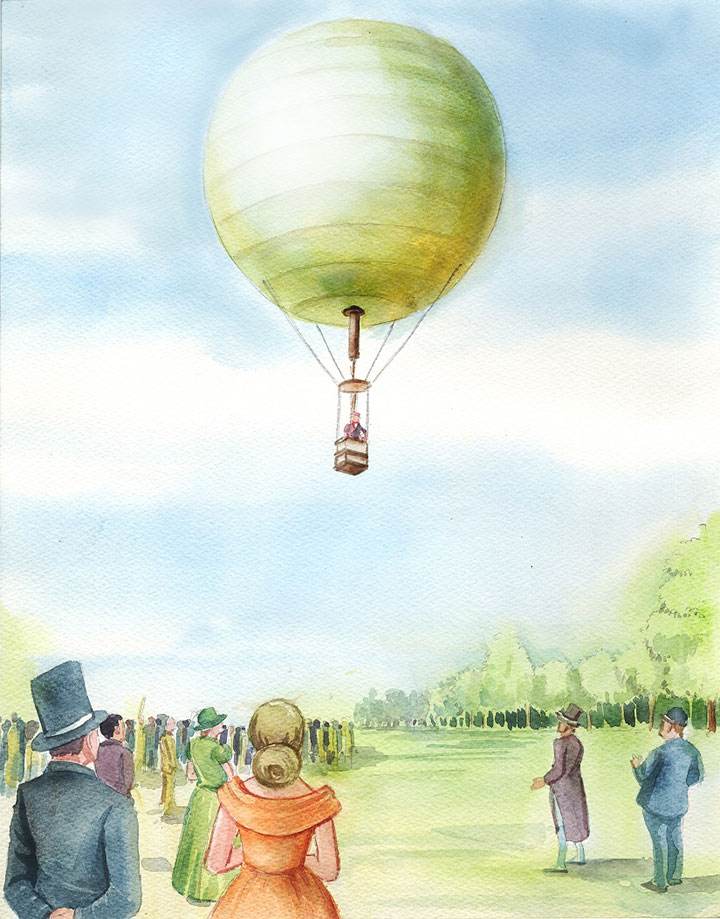
Dumont approached several flyers and took valuable advice from them. Balloons fly only where the wind directs it and not where you want it to fly. So his main aim was to make a ‘dirigible’, an air balloon that could fly in any direction as you wished. He soon began conducting experiments with hydrogen balloons. He conducted 25 solo flights, dangerously plunging and diving several times before the correct design was formulated.
His new design of the balloon was simpler and lighter than the previous ones. The engine which was ignored by many fliers in the past, was the first to catch his attention. He very well knew that the engine run by electricity would be heavy due to batteries, so he opted for the gasoline engine used in cars. The baskets of the old balloons were heavy and weighed 66 lbs, but Dumont designed a basket weighing only 13 lbs. The balloon net which usually weighed hundreds of pounds, was reduced by Dumont to only 4 lbs. The fabric used by Dumont was a thin bright yellow Japanese silk, to give the balloon an attractive look.
The ultimate challenge was to release the hydrogen gas for the balloon to descend, without it losing its shape and collapsing. Dumont designed an air pump to provide pressure to a balloon within the balloon which he called a ballonet. As a result when the balloon ascends, some gas would be released out of the ballonet and when it descends the air pumped in the ballonet would pressurize the shrinking hydrogen to keep the balloon inflated. The entire balloon finally weighed only 50 lbs and could be easily carried in a suitcase which till date is the smallest portable balloon ever designed.
He named his first balloon ‘Bresil’ when he was barely 25 years old in 1898, and directed, controlled, and climbed to 1300 feet and turned at will over the excited and cheering populace of Paris. Inspired by his success at maneuvering an air balloon, he designed another balloon to accommodate his close friends and named it ‘America’.

The joy of flying in a balloon across the sky had an exhilarating effect on Dumont’s mind and soul. He began to spend most of his precious time in innovating new devices and techniques to upgrade his airships. From 1898 to 1905, he built and flew 11 Dirigibles. Airship Number 3, was designed to resolve the problem of folding of the ballonet, and he test flew it innumerable times across the Eiffel Tower with grand success.
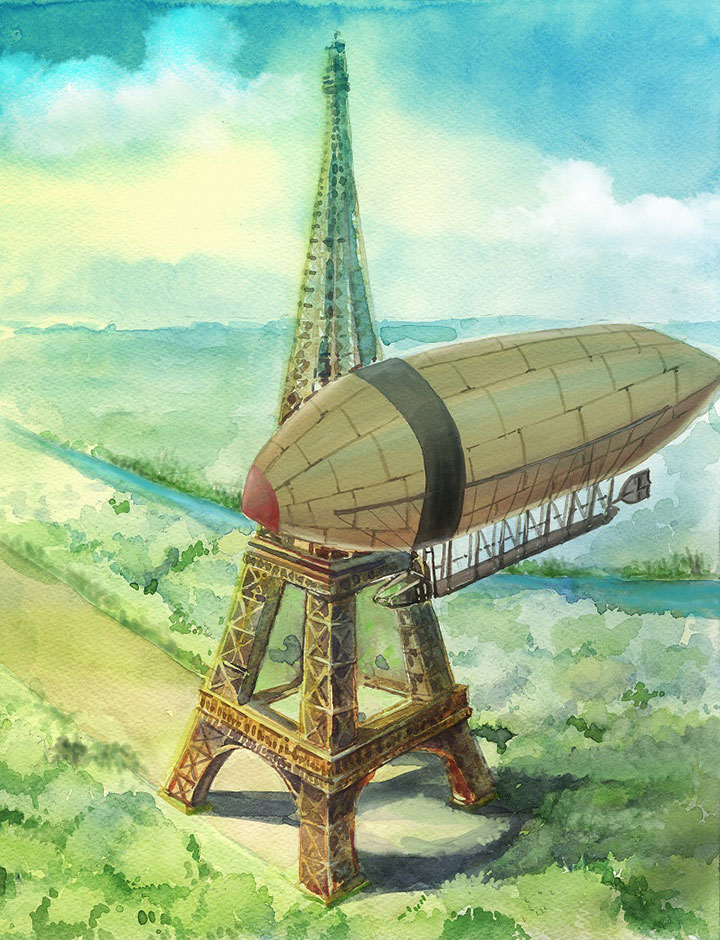
To minimize wastage of hydrogen gas after a day’s flight, he built the first multi-purpose hanger which was 100 feet long, 23 feet wide and 36 feet high. The hanger was specifically designed to easily accommodate all his airships.
In 1901, when he was 28 years old, he designed Airship Number 4, mainly for the pilot cabin where he could comfortably sit on a bicycle seat instead of the basket. The unique design became a huge craze among the public, as they were now able to watch their petite 5 feet 1 inch tall Dumont, in his airship. Men would often cheer him by throwing their necktie at him as he flew over them, and Dumont’s heart soared with pride. He became a celebrity in France and one of the youngest to win the highest award; the Legion of Honor, when he was only 28 years of age.
A year later in 1902, Dumont designed Airship Number 5, with a bigger and more powerful four cylinder motor, engulfed in a larger envelope and a systematic fuselage. The entire design was constructed using wood and aluminum joints and piano wire for bracing. This airship was more user-friendly and compatible than the previous ones and he flew comfortably for more than 30 miles around Paris.
Dumont designed several airships in the period between 1903 and 1907. Airship Number 9 was noteworthy as it was designed to accommodate 10 passengers. He would often fly in this mini airbus to town, land on a roof of a restaurant, dine with his friends and fly back to his personal hanger. Oh! That was indeed so stylish. Another important aspect of this mini airbus was that it was flown solely by a Cuban woman named Aida de Acosta, for the first time in the aviation history, for a half mile between Neuilly and Bagatelle. Dumont was so overwhelmed by the young woman’s initiative, that he kept her photo on his desk for several years as a remembrance.

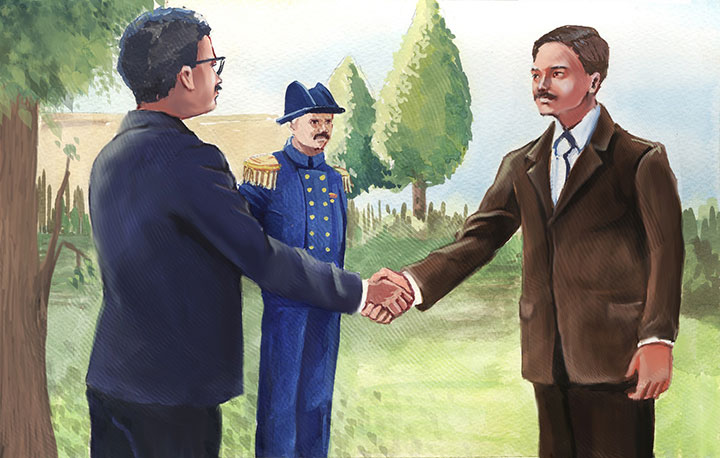
Dumont’s efforts to capture the sky received worldwide attention and praise particularly from the Air craft engineering fraternity and pioneers such as Edison and Marconi. He was also invited to be first guest of honor at the British Aero Club. When he was 31 years old, he visited United States and met President Theodore Roosevelt and Admiral Dewey and served as an advisor in aeronautical matters. The icing on the cake came when the Prince of Monaco constructed a huge 180 feet hanger on the ocean to ensure that Dumont’s research in cold winters continues smoothly.
Dumont was on cloud nine and suitably fashioned himself with high collar shirts and vertically striped suits to conceal his short height. His new style mantra of a floppy hat and baggy trousers, became a hit with the fashion conscious Parisians, and they simply adored it. His close friend, Louis Cartier, specially designed a wrist watch for him so that he could check the accurate time while flying. The wrist watch became a branded name in the social circle, as it was the first wrist watch ever made. Even today, the Cartier Company produces the Santos-Dumont model, and it is one of the most finest and expensive watches today.

Dumont was basking in the glory of his success, and was totally unaware, as was everyone else, of the efforts of the Wright Brothers. As Dumont got easily bored of his success, he decided to develop something new and distinctive. His new mission was now to develop a heavier than air flying machine.
He took his first clue from his childhood hobby of flying kites. He designed his flying machine with a main wing joined at their sides and a frontal box to be used as a ‘pitch and yaw’ control. He believed that the airplane should be in boat shape in the lateral axis. He fitted an engine and propeller in the rear and for the smooth take-off and landing he devised a wheel landing gear. As the design was crucial and complex, he hired the necessary technical assistance from Gabriel Voisin, a European who later on emerged as a powerful aviation pioneer himself.
After several attempts and experimentation, it was time for Dumont to demonstrate his new design, which he called Hybrid Number 14 or 14-bis to the press. The machine took off successfully, but awhile later it crashed on the ground, destroying the propeller. Dumont was not disappointed with the failure, and realized, that certain changes in the longitudinal control will overcome the hitch.
On 23rd October 1906, 33 year old Dumont, once again invited the press and other officials for another demonstration. A large crowd had gathered to watch Dumont’s skills, and this time they were not disappointed. The new machine not only took off easily, it flew 200 feet and landed smoothly. Dumont cried to the sea of people, ‘Have I won’, and the crowd went berserk only to declare unanimously, “YES, MAN HAS CONQUERED THE AIR.”
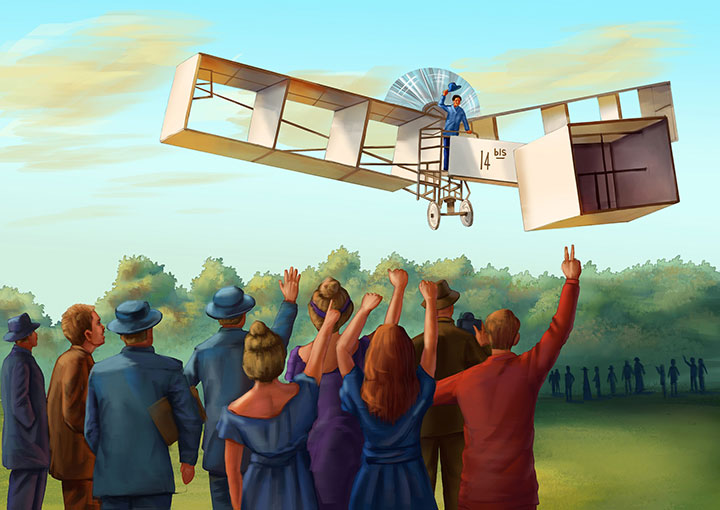
In Brazil, 23rd October is still celebrated as ‘Aviator’s Day’.

Dumont’s quest did not end here as he decided to compete for the Archdeacon prize, instituted by the prestigious Paris Aero Club. Another contender for the prize was Louis Bleriot, a French aviator who designed a huge biplane. As it ran successfully on the runway, it crashed without lifting off. Now our young flyer, Santos –Dumont, flew his bird for 720 feet in 21 seconds and landed successfully without any damage. The crowds gave their final verdict, ‘V’ for Dumont and the whole of Paris celebrated. Dumont, a man with a golden heart, decides to donate the prize money to the deserving poor, and does not patent, believing that they should be free for all.
Still unaware of the accomplishments of the Wright Brothers, Dumont zealously continued to innovate on the material, design and technology of his flying machines. His new invention was a tiny, ultra-light monoplane named ‘the Demoiselle’. In this machine, the pilot sat under the wings with the engine slightly above his head and in front of him. The wings took only 108 square feet of the area and the ribs were constructed with bamboo. The entire machine only weighed 250 lbs when empty. Dumont flew in his tiny bird several times to meet his friends, landing on the spacious lawns of their private estate.

Dumont continued to develop and redesign ‘Demoiselle’ to perfection, for better utility and many Countries were grateful to him for this wonderful discovery. He was actually responsible for designing the first plans that homebuilder’s could utilize to construct an airplane that could fly. He entered into a contract with Adolphe Clement’s “Clement Bayard Company”, for the world’s first series of production aircraft. United States of America and Europe constructed at-least 10 Demoiselle, and that too within a short span of 15 days.
Dumont continued to make several contributions in the field of aircraft control. It was he who made the use of effective ailerons at the tips of the wings. He also improvised engine power and other aircraft maintenance techniques. Somewhere in August 1908, the Wright Brothers-Wilbur and Orville Wright visited France to display their version of the airplane – Flyer. They had waited till the patent for the same was granted before their demonstration. After much uncertainty, the French aviators declared that the claims of Wright Brothers to manoeuvre long distance flights had indeed surpassed earlier efforts. One of the Wright Brother’s flight lasted over two hours, which was superior, considering other flights which were still measured in minutes and seconds.
The declaration created a storm in aviation circles, as one newspaper published Louis Bleriot’s statement-“We are beaten - we are nothing”. The Wright Brothers became the new heroes in aviation history, and Dumont’s masterpiece was studiously ignored.
There are no evidences to show Dumont’s immediate reaction, but he certainly must have been very disheartened. Many of the Brazilian states and other French aviation officials believe that ‘Flyer’ is not capable of takeoff without the help of strong headwind. Many technical comparisons between ‘Flyer’ and Dumont’s ‘Hybrid 14’ were cited, some in favour of the ‘Flyer’ and some in favour of ‘Hybrid 14’. But whatever said and done, the ‘Flyer’ model of Wright Brothers was finally accepted in France and in USA.

The Wright Brothers had become celebrities, and the world conveniently forgot the dedication and hard work of Dumont. He soon went into depression, and was diagnosed with multiple sclerosis, a degenerative disease, affecting the nervous system. He became a recluse and retired from all his aeronautical activities.
Dumont never intended his invention to be used for the destruction of mankind and was deeply anguished to see his planes used in the great war of 1914-1918. This infuriated him further and affected his health adversely.
In the year 1927, Dumont was invited by the Swiss Aero Club, to preside over the dinner held in honor of one Charles Lindbergh, who flew over the Atlantic Ocean. But Dumont was so weak and frail, that he wept on his inability to attend the function. In spite of his frail condition he still dreamt … of a man flying with just one motor on his back, a very modern and innovative concept, which was almost visionary and way ahead of the times. He finally decided to leave his friends, his birdies and spend his last days in Brazil at Sao Paulo.
In 1932, when he was 59 years old, the Brazilian people staged a civil revolution against the dictator Getulio Dorneles Vargas. Dumont helplessly watched his planes used to drop bombs and bullets on the innocent civilians. The scene created havoc in his mind and he admitted the blunder of his creation, and stated, “It’s all my fault”.
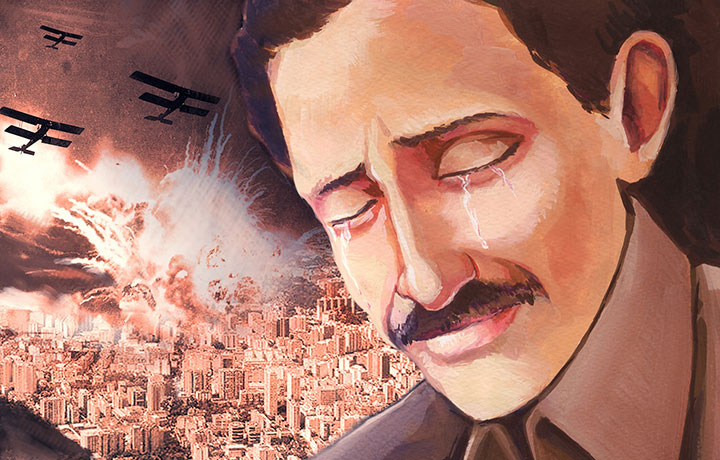
Immediately thereafter he went to the bathroom only to hang himself and was lost to the abyss of darkness. The world lost one of its brightest stars on 23rd July 1932.
After his death, several airports in Rio de Janerio and Paranagua were named after him. A highway in Sao Paolo is named as Rodovia Santos Dumont. On 23rd October 1991, the Brazilian Government bestowed the title of ‘Father of Aviation’ on Alberto Santos Dumont.

Who flew first, has and will always be a matter of debate among the aviation enthusiasts. The Wright Brothers and Alberto Santos-Dumont shared one common dream; to conquer the sky and provide mankind the best and the fastest means of transportation. Both of them were so passionate to pursue their dreams that they never entered into any marital alliance that could distract them from their mission to fly. Both succeeded in their endeavour, but fate favoured the famous Wright Brothers.
No one in the 21st century has achieved what Dumont has dreamt. Even the most elite corporate moguls have managed to commute by helicopters landing on helipads of office roofs. But even these globe-trotting business tycoons, cannot fly to their favourite restaurant or theatre. Today, as the world remembers the Wright Brothers fondly, let us not ignore the importance of the contributions made by Alberto Santos-Dumont’s dirigible balloons, which led to the discovery of first airplane.
Through this biography, I have taken the lead to salute the Father of Aviation - Alberto Santos-Dumont, and acknowledge his sincere efforts to conquer the sky. Hope you readers follow soon…
Next Biography








